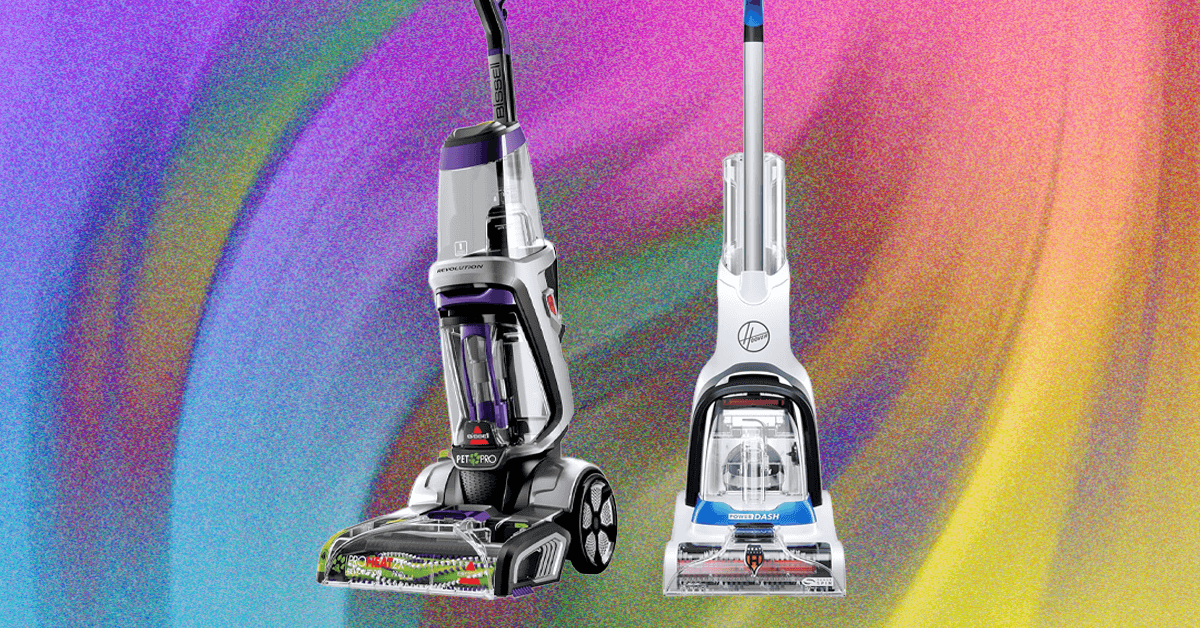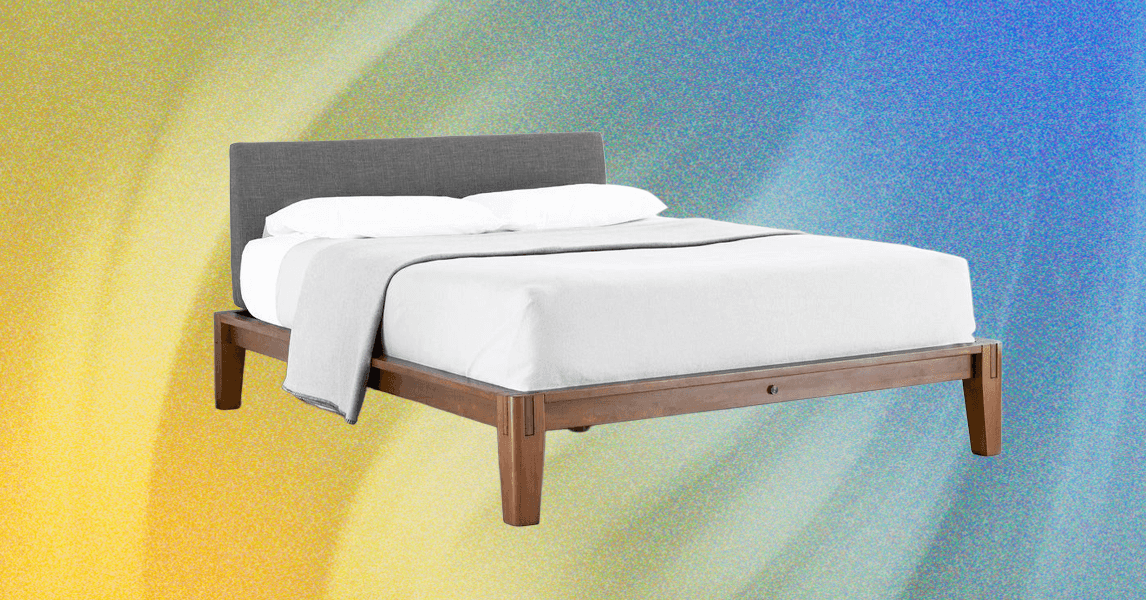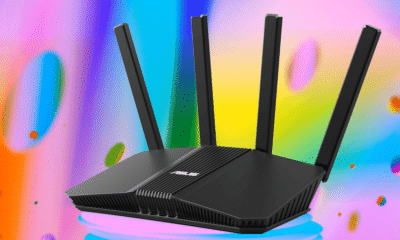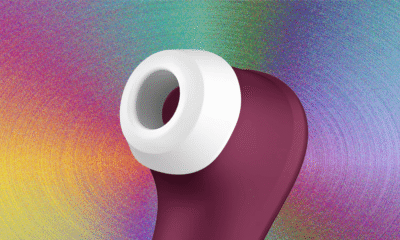Tech
The Best Carpet Cleaners We’ve Found, Tested in Busy Households

Compare Our Picks
Others Tested
Photograph: Simon Hill
Hoover HF4 Hydro for £199: For UK folks in flats or small houses with a mix of carpet and hard floor, this cordless, space-saving vacuum and mop from Hoover could be a smart pick. You get a standard cordless stick vac with around half an hour of battery life, but you can switch the head to mop. It’s excellent for cleaning hard floors, with a shape that gets right into corners and two rotating pads to lift stains. But the water tank, contained within the head, is tiny, the vacuum is only moderately powerful at lifting, and battery life drops to just 15 minutes in turbo mode.
Hoover SmartWash Automatic Carpet Cleaner for $250: It’s bulky, but it has automatic cleaning and drying cycles—pushing it forward releases the solution and pulling it back starts the drying process. After you’ve gone over the whole area, you can turn just the drying mode on for an extra pass if the carpet needs it. The handle comes out with the click of a button, and you can use its separate tank with a cleaning solution to spot-treat before vacuuming. A hose and separate antimicrobial pet tool can clean stairs or any other hard-to-reach areas that need extra elbow grease. Some customer reviews say it worked well for a few months but then shorted out. We’ll keep trying it to see if we run into that issue. —Medea Giordano
Bissell Little Green Portable Carpet Cleaner for $79: If you’ve landed on the cleaning side of TikTok, you’ve probably seen people cleaning their carpets and furniture with this Little Green machine. This opens up the world of upholstery cleaning too, not just carpets. It worked well and it’s easier to store and tote around your house than our top pick. But use the included hose-cleaning tool frequently. These hoses can get nasty. —Brenda Stolyar
Cleaners We Like for Hard Floors
Photograph: Simon Hill
Dreame H14 Pro for $380: The Dreame H14 Pro is quite large, but I found it easy to maneuver, and it can lie flat to get under furniture. A handy LED headlight helps you see what you are cleaning clearly. A full charge proved enough to do all my hard floors twice over, and the result was super shiny. What I love about this vac is that it effectively cleans up dry or wet spills, so whether you are cleaning cat litter or a spilled bowl of cereal, it performs. It’s best for cleaning recent spills but can shift stubborn stains with repeated passes on Ultra mode. When you finish, you can return it to the charging cradle and trigger the self-cleaning mode to sterilize the soft roller and dry it (though it gets loud and takes a long time). No one wants to install an app or create an account just to use a vacuum, but it enables you to choose modes and schedule the self-cleaning, which could be handy if you want it to wait until you go out. —Simon Hill
Shark S5003D Genius Steam Mop for $100: This steam mop is great for cleaning hardwood, tiles, or laminate flooring (not carpets). Simply fill the water tank, plug it in, and attach one of the mop pads. It has three heat levels, and you press down to release a jet of steam for stubborn stains. There’s no need for any detergent, it’s light and maneuverable, and it doesn’t require much space. The clever pad design enables you to flip it over when one side is soiled, and the mechanism makes it easy to attach, with a button to detach the dirty pad, which is machine washable. (You get two pads in the box.) I regularly use this mop to clean laminate, composite, and tile floors, but you must be careful using steam, especially on wood or vinyl flooring. Test it on the lowest heat setting before going over the whole floor. There are no special attachments or extras here, and it’s only suitable for use on hard floors. You also need to empty any remaining water if you don’t plan on using it for a while, or the tank can go nasty. —Simon Hill
Karcher SC 3 for $164: If your budget can stretch, this option is better if you want attachments and the option to steam-clean harder-to-reach surfaces and your hard floors. It’s good for complete kitchen or bathroom cleaning without the need for any detergent or other products. It’s effective for cleaning glass and mirrors too. It only comes with one microfiber cover, and it’s not recommended for use on fabrics or carpets. —Simon Hill
Not Recommended
Eufy E28 HydroJet Robot Vacuum with Carpet Cleaner for $1,400: I generally love Eufy’s attractive, smart, multipurpose robot vacuums, and since I have two dogs and two kids, I was expecting to love a robot vacuum that could also mop hardwood floors and has a detachable carpet cleaner. Unfortunately, the water injection system is wonky. It has to be perfectly positioned to get water from the portable carpet cleaner tank (I often had to tap it into place), and every time I mopped, it leaked constantly all over my kitchen floor. At least the carpet cleaner was effective. —Adrienne So
Things to Consider When Shopping for a Carpet Cleaner
There is a lot to think about when shopping for or using a carpet cleaner, such as how much space you’ll need for storage and whether you should rent or buy. Here are some tips to keep in mind.
Carpet cleaners are heavy and bulky, especially when filled with water. They can be harder to maneuver than regular upright vacuums. They will also need quite a bit of storage space.
Tackle stain-causing spills immediately. Most households only need to wash carpets once every six months to a year, but spot cleaners are ideal for treating immediate spills, plus they’re easier to store and use.
You likely won’t use a carpet cleaner often, so it’s OK to consider hiring professionals to do your whole home, especially if you have limited storage space. (It also can depend on how dirty and stained your carpets are.) Look at options for renting a machine from local businesses or retail stores like Home Depot. You’ll be able to get the benefits of a commercial-grade cleaner without paying a fortune.
Clean your carpet before you use a carpet cleaner. This may seem counterintuitive, but you don’t want dirt and hair to form wet clumps that block the cleaner. And if you haven’t washed your carpets in a while (or ever), be prepared for an embarrassing amount of hairy clogs to fill the dirty water tank.
The carpet shampoo or detergent you use is important. Manufacturers often insist you use their brand, and while other types may work fine, you might void your warranty (although I have no idea how they’d know). Most carpet cleaners come with some detergent.
Try, try, and try again. It can be disappointing to fire up a carpet cleaner and find that it’s incapable of removing that old red wine stain or ground-in toothpaste. Don’t lose heart. Multiple cleaning sessions can sometimes chip away at established stains, and at least reduce, if not remove, them.
Drying your carpets can take a long time. Most carpet cleaners have different settings, and they will suck up some of the water, but they all leave carpets a bit damp. The deeper cleans tend to leave carpets wet, so think about how you might speed drying time. Use fans, fire up the heating, or do your carpet cleaning in the spring and summer months when you can leave windows open.
Protect your hearing. Of all the ways you can damage your hearing, a carpet cleaner is perhaps the least fun, so protect your ears. Some of these get very loud, so wear earplugs while you work.
Power up with unlimited access to WIRED. Get best-in-class reporting and exclusive subscriber content that’s too important to ignore. Subscribe Today.
Tech
Every Model of this New Snoopy MoonSwatch Is Different—And You Can Only Get One When It Snows

First a confession: I own more MoonSwatches than I care to admit. Never let it be said that WIRED does not walk the walk when it comes to recommending products—Swatch has assiduously extracted a considerable amount of cash from me, all in $285 increments. This was no doubt the Swiss company’s dastardly plan all along, to lure us in, then, oh so gently, get watch fans hooked. The horological equivalent of boiling a frog. It’s worked, too—Swatch has, so far, netted hundreds of millions of dollars from MoonSwatch sales.
But while I’ve been a fan of the Omega X Swatch mashup since we reported on exactly how the hugely lucrative collaboration came to be in the first place, I have never liked the iterative Moonshine Gold versions. Employing a sliver of Omega’s exclusive 18K pale yellow gold alloy in marginally different ways on each design, they seemed almost cynical—a way of milking the MoonSwatch superfans on the hunt to complete the set.
Now, though, just when I thought I was done with MoonSwatch—having gone as far as to upgrade all of mine with official $45 color-matching rubber straps—Swatch has managed to ensnare me once again, and with a Moonshine Gold model: the new MoonSwatch Mission To Earthphase Moonshine Gold Cold Moon.
Clumsy moniker aside, this version takes the all-white 2024 Snoopy model (WIRED’s top pick of the entire collection), mixes it with the Earthphase MoonSwatches, and replaces the inferior original strap for a superior white and blue Swatch rubber velcro one. Aesthetically, it’s definitely a win, but this is not the Cold Moon’s party trick.
On each $450 Cold Moon MoonSwatch, a snowflake is lasered onto its Moonshine Gold moon phase indicator—and, just like a real snowflake, Swatch claims each one will be completely unique. When you consider the volumes of MoonSwatches Swatch produces each year, this is no mean feat.
Tech
These Are the Best Tech Deals to Shop This Cyber Monday

Welcome to WIRED’s guide to the best Cyber Monday tech deals, where we can promise you two things: these devices are worth buying (we’ve tested and recommended every one of them), and these are actual discounts (not the year-round price). So, whether you need an upgrade, want to treat yourself, or are seeking a great gift, we have you covered.
Want a wider range of deals? Check out the Absolute Best Black Friday Deals roundup to find more bargains this sale weekend.
Updated November 30: We’ve added deals on Samsung Galaxy Z Fold7 and Galaxy Z Flip7, Galaxy S25, S25+, S25 Ultra, Lenovo Flex 5i Chromebook Plus, Apple AirPods Pro 2, and Apple Watch SE 3.
The Google Pixel 10 is one of the best Android phones you can buy. Easy to recommend at full price, the Pixel 10 is an absolute bargain with this discount. You get an excellent triple-camera system with a 5X optical zoom sensor, support for Qi2 wireless charging, so you can magnetically attach to wireless chargers and docks, and Google’s super smart software features (Call Screen to filter out spam calls is our favorite). Learn more in the Best Pixel Phones guide.
The Pixel 9a is our top smartphone choice for most people, and it’s now $50 cheaper than it was on Black Friday itself. At $349, you’re getting a smooth-performing smartphone with a reliable dual-camera system that’s unmatched at this price, not to mention day-long battery life and a completely flat camera lens system for anyone who hates giant camera bumps. Oh, and it’ll get 7 years of software updates.
Sony’s A7 IV is the best mirrorless camera on the market (for most people). It’s a 33-megapixel, full-frame camera with a brilliant autofocus system, impressive dynamic range, and crisp images. There’s an expansive range of 4K video options as well, along with customizable buttons to set up your preferences, so you don’t have to always rummage through the menus. Reviewer Scott Gilbertson found the grip to be super comfortable and the camera to be light enough to endure for long periods without any back strain. —Boutayna Chokrane
If you’re shopping for open earbuds so that you can enjoy your music but still be aware of your surroundings, the Soundcore Aeroclip is the best we’ve tested so far. Reviewer Ryan Waniata praises the comfort, sound quality, usability, and value. The sound is wide and balanced, and the built-in controls are ideal for runs. Waniata likes to use them during outdoor activities, like hiking or biking, but he finds them especially helpful when he’s cooking dinner and needs to stay alert for his newborn’s cries. —Boutayna Chokrane
Editor Adrienne So says the Fitbit Ace LTE is the first fitness tracker she’s gotten her kids to use. It’s a fitness tracker (designed with Fitbit’s health sensors), gaming device, and location tracker. The $10/monthly subscription includes both LTE connectivity and Fitbit Arcade, which has a variety of movement-based games that get children on their feet and incentivize them to keep their watches on. They can call and text their guardians (and other approved contacts) through the Fitbit Ace app, and their location is trackable via Google Find My. —Boutayna Chokrane
This is a rare and tasty deal on my favorite Xmas lights. They work indoors or out, can be scheduled, and support a bunch of lovely animated effects. While I’m mentioning Philips Hue and its excellent but horribly expensive wares, you might want to check out some of its other Cyber Monday deals. My picks would be the wall washers ($316), TV lightstrip ($129), and HDMI sync box ($270).
The Asus RT-BE58U is perhaps the ideal Wi-Fi 7 upgrade for modest homes and apartments still struggling with the crappy router their internet service provider sent, and that’s why it tops our Best Wi-Fi Routers guide. It’s easy to set up and use, can cover up to 2,000 square feet, and boasts plenty of ports. As a dual-band router, it lacks the 6-GHz band, but has all the other advantages of Wi-Fi 7. There’s also support for VPN service, separate IoT or guest networks, and Ai Mesh.
Don’t ask me why they keep taking our ports away. God forbid you should want to plug something into your laptop. Well, you can stick it to those minimalist designers with the best laptop docking station. This one doubles as a wedge to prop your laptop up and has a storage slot.
These wireless noise-canceling headphones may not be the latest release from Sony, but they are still an excellent pair of cans with a far deeper discount. The Sony WH-1000XM5 are relatively light and comfortable, producing accomplished sound in every scenario, and have great control options.
You can spend a lot on a TV, but you can also get a great screen without breaking the bank, and the TCL QM6K proves it. This is the best TV for most people right now as it offers excellent color and processing, all the apps you want, and great performance, even in bright rooms. There are discounts across the range of screen sizes.
If you want to get the latest streaming apps on an older TV, the Roku Streaming Stick Plus is for you. It’s easy to set up, works reliably, and has a handy voice remote that makes finding content easier than ever. It slots neatly behind most TVs, and Roku’s interface is nice and clear.
Apple doesn’t really do sales, but other retailers do. This is the lowest price we’ve seen on a solid iPad the whole family can enjoy. The Apple iPad (A16, 2025) performs great for most tasks, looks pretty nice, and has a 12-megapixel camera. It is honestly all the iPad most folks need for surfing the web and streaming shows in bed. With iPadOS 26 and the new windowing apps feature, you can even comfortably do some work if you pair it with a Bluetooth keyboard and mouse.
Handy as they are for keeping you connected when your phone dies unexpectedly, portable chargers can be very same-y. The reason the Nimble Champ tops our Best Power Banks guide is Nimble’s focus on the environment. It’s made from 90 percent certified recycled plastic and comes in fully biodegradable packaging. It also works well, with capacities starting from 5,200 mAh, with USB-A and USB-C ports, and up to 15-watt charging.
Yes, you should read more, and Amazon’s Kindle e-readers make it easier to do exactly that. Our current favorite is the Kindle Paperwhite (12th generation). It has a sharp 7-inch display, auto-adjusting warm light, three-month battery life, snappy performance, and it’s slim and light, making it comfortable to hold. It even has integration with Overdrive for your library books and support for several languages.
The reMarkable 2 is one of the best digital notebooks, offering a paperlike writing experience, intuitive software, and several weeks of battery life. This is a budget model, so it lacks front light and color, but it’s still a decent device. Bundles where you choose both a marker and folio are heavily discounted right now, and they’re not often on sale, so it’s a good time to snap one up.
Keychron boards are popular here at WIRED, and the Q6 HE is our current pick of the best mechanical keyboards. Sturdy, satisfying to type on, with a lovely retro aesthetic, what more do you need? Well, the Q6 HE also boasts hot-swappable Hall Effect switches, four macro keys, and is relatively easy to customize or repair.
The great thing about Nomad’s 65-watt charger is that it’s incredibly slim, with flip-out prongs, so it can slip easily into small pockets in your bag or purse. You get dual USB-C ports, and can pull 45 watts out of the left port and 20 out of the right. Or, if you’re just charging one device, the full 65 watts is enough for any phone, most tablets, and even some MacBooks or Windows laptops (though they may not charge at top speed).
You know what I don’t miss in the slightest? Mowing the lawn. A good robot mower, like this relatively affordable one from newcomer Anthbot, will do it for you, quietly. No wire required; it recharges itself, you just set a schedule and relax. OK, it sometimes leaves a verge, but the only model I’ve tried that doesn’t is more than twice the price.
Sharp 2K video, color night vision, a wide 160-degree field of view, and clear two-way audio make the Arlo Pro 5S easy to recommend for folks seeking a security camera. You also get AI recognition for people and pets, a siren to scare intruders, and the quick-loading Arlo app. But you need Arlo Secure ($8 per month for one camera or $13 per month for unlimited cameras) for subject recognition, smart alerts, and cloud storage. The Arlo Pro 5S is our pick of the best outdoor security cameras.
I love my Oura Ring 4. It accurately tracks my sleep, activity, and stress levels and offers insights that I find genuinely useful. It’s also very comfortable, the app is super slick, with new features being added all the time, and it’s far less obtrusive than any other kind of tracker you could wear. The catch is a subscription, but this is still the best of the best smart rings.
It’s the thoughtful design that elevates the Backbone One above the rest of the best mobile controllers. Slot your phone into the compact cradle, with a USB-C jack for speedy connectivity, and you get satisfyingly clicky and responsive controls plus a 3.5-mm headphone port. You can also customize it for different games, or even use Backbone’s software as a one-stop gaming hub, if you’re willing to pay a subscription.
Yes, there is a new version of the Ray-Ban Meta Wayfarers, but the good news is that the old pair is now on sale. If you can stomach Meta AI’s privacy policies, there’s a strong argument that it has won the smart glasses race already (at least, so far). The best smart glasses must be easy to wear, and these look great and help offload things from your phone, so you don’t have to dip into that pocket quite as much.
The JBL Flip 7 is the Bluetooth speaker that has it all. It’s durable, it has stamina, it produces a punchy sound, and it comes in fun colors. As the best Bluetooth speaker you can buy, this deal is for real.
Toniebox is our favorite speaker for young kids, particularly ages three through seven. It’s essentially a squishy cube that plays stories and songs tied to different characters (aka Tonies). It’s activated when your child places the figurine on top of the speaker. There are so many Tonies to choose from. Peppa Pig, Moana, Winnie the Pooh, the list goes on. You can also buy Creative Tonies to record your own audio. Super easy to use, and the cutesy ears double as volume controls. —Boutayna Chokrane
The best tech books unpack the rise and fall of the characters that invented the stuff that runs our lives. The New York Times and former Wall Street Journal reporter John Carreyrou writes about Elizabeth Holmes, as she miserably fails to build a blood testing machine that would allegedly eliminate the need for hypodermic needles. Her company raised hundreds of millions of dollars, but its technology was inaccurate. Rather than admit defeat, she pressed on, which is why Holmes was put on trial for fraud and sentenced to 11 years in prison. —Boutayna Chokrane
Samsung’s flagship Galaxy S25 has been heavily discounted all Cyber Weekend, probably because its successors are right around the corner (the Galaxy S26 series is expected to be announced in January). But we still love these excellent smartphones. The S25 is the smallest, the S25+ gets a few extra perks, plus a bigger screen and better battery life, and the Galaxy S25 Ultra has a dual telephoto camera system, integrated S Pen stylus, and a beefy battery. Be sure to check out the Best Samsung Phones guide for the full scoop. —Molly Higgins
You’re not like other girls; you have a folding phone. In all seriousness, folding phones are not as fragile as they used to be, with durability improving while remaining slim. We love the Galaxy Z Fold7 because it’s amazingly slim and versatile. You can use the front screen like normal, and when you need extra real estate, open the device up. You can view apps on a much larger scale or easily split-screen two apps. If you’re not feeling a folding phone, the updated Galaxy Z Flip7 has a more usable front screen. Read our Best Folding Phones guide to decide which is best for you at the discounted price this Cyber Weekend. —Molly Higgins
The Lenovo Flex 5i Chromebook Plus is super cheap and compact, with a small touchscreen for more versatility. Especially with the Cyber Monday discount, it’s one of the most affordable Chromebook Plus models you can find, plus WIRED reviewer Luke Larsen thinks it’s in a whole different league over standard Chromebooks at this price because of its improved screen with a 360-degree hinge and touchscreen, fast performance, more storage, and crisp webcam. —Molly Higgins
Even though they’re an older model, we like these AirPods because of their hearing aid feature, comfort, and outstanding streaming experience. If you’re an iPhone user, you should have some AirPods, and we still think these are a good choice for most people because of their active noise cancellation, sound quality, and easy pairing within the Apple ecosystem. Plus, it doesn’t hurt that they’re nearly 25 percent off for Cyber Monday. —Molly Higgins
We on the WIRED Reviews team still think this is the best Apple Watch for most people. With its newest upgrade, it now has the latest S10 chip, a Liquid Glass display, Workout Buddy, and wrist-flick gestures. If you have an iPhone, this accessory is a no-brainer. It makes a great gift for yourself or others, and is seriously discounted at only $200 right now. —Molly Higgins
Power up with unlimited access to WIRED. Get best-in-class reporting and exclusive subscriber content that’s too important to ignore. Subscribe Today.
Tech
Dreaming of a Thuma Bed Frame? Don’t Miss the Black Friday Sale

Thuma knows what it’s doing when it comes to bed frames, which is why we’re so excited to see Thuma’s Black Friday deals. Two different frames from Thuma are the top picks in our Best Bed Frames guide, and our reviewers have reported how not only high-quality and and sturdy the brand’s frames are, but also how easy it is to put the frame together thanks to Japanese-style joinery.
While our top pick isn’t on sale, our second-favorite is on Thuma’s site during this Black Friday weekend, and it’s a great price for the quality you’ll get. And it’s not the only thing Thuma has on sale, either, if you’re looking for more Thuma goodness around your bedroom and home.
If you’re looking for more great sleep deals, don’t miss our guide to the Best Black Friday Mattress and Bedding Deals, plus you can catch more sleep deals on our guide to the Absolute Best Black Friday Deals.
The Best Thuma Bed Frame Deal
Thuma’s Signature Bed is one of our all-time favorite bed frames. It’s on the new side, launching back in February as Thuma’s first upholstered bed. It still uses Japanese wood joinery, but the frame is covered in two different fabric options, depending on what you choose. There’s a soft Italian felted wool and a performance linen; our reviewer tested the wool version for a few months with great results.
Even with the fabric covering, it still only takes minutes to assemble this bed, and there’s not a squeak to be heard since it was built. WIRED reviewer Martin Cizmar says the plush headboard feels pillow-soft, so much so that he’s tempted to try to lie directly on it. The frame can come with or without a headboard, and both variants are on sale right now.
If it’s still out of your budget, check out our guide to the Best Thuma Dupes to see if any on-sale options are a fit for you. But there’s really no better time to get a Thuma frame of your own than during this sale, especially since we’re such big fans of this model.
More Thuma Deals
Power up with unlimited access to WIRED. Get best-in-class reporting and exclusive subscriber content that’s too important to ignore. Subscribe Today.
-

 Sports7 days ago
Sports7 days agoWATCH: Ronaldo scores spectacular bicycle kick
-

 Entertainment7 days ago
Entertainment7 days agoWelcome to Derry’ episode 5 delivers shocking twist
-

 Politics7 days ago
Politics7 days agoWashington and Kyiv Stress Any Peace Deal Must Fully Respect Ukraine’s Sovereignty
-

 Business7 days ago
Business7 days agoKey economic data and trends that will shape Rachel Reeves’ Budget
-

 Tech5 days ago
Tech5 days agoWake Up—the Best Black Friday Mattress Sales Are Here
-

 Fashion7 days ago
Fashion7 days agoCanada’s Lululemon unveils team Canada kit for Milano Cortina 2026
-

 Politics7 days ago
Politics7 days ago53,000 Sikhs vote in Ottawa Khalistan Referendum amid Carney-Modi trade talks scrutiny
-

 Tech5 days ago
Tech5 days agoThe Alienware Aurora Gaming Desktop Punches Above Its Weight
















.jpeg)










.jpg)

-Reviewer-Photo-SOURCE-Simon-Hill.jpg)






-Portable-Charger-Reviewer-Photo-(no-border)-SOURCE-Simon-Hill.jpg)
%2520_%2520Nena%2520Farrell.png)




.jpg)










-Reviewer-Photo-SOURCE-Ryan-Waniata.jpg)





.png)

.png)






